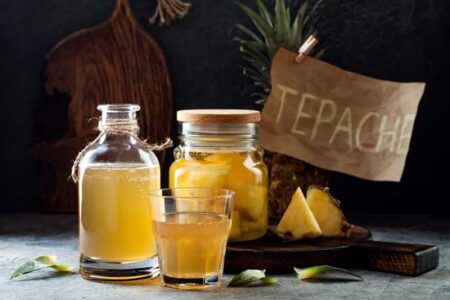Many people mistake the distilling process as the “alcohol creation” process. Rather, it is the process in which a chemical, in this case ethanol alcohol, is removed from another chemical. The process is centuries old, and is used in a myriad of applications from alcohol distillation to essential oil extraction.
Luckily, this post is primarily focused on alcohol distillation. Why luckily? Because who doesn’t like a stiff drink every now and again?
The overall process of alcohol distillation can be summed up into 3 parts: Fermentation, Distillation, and Finishing.
Fermentation
Any of you who have ever made beer or wine will see this process as old hat, but in the effort for maximum clarity, we will cover it for everyone. The basics of the fermentation process are thus:
- Introduce sugar to liquid and yeast
- Over time the yeast process the sugar into alcohol
- After a certain time the yeast stop producing alcohol as the sugar has been fully consumed.
What most people don’t understand is, alcohol is really just the excrement of yeast. Yes, alcohol is yeast pee. (Makes you look at your gin and tonic a bit differently, doesn’t it?)
In the case of most, not all, alcohols, grains are used as the sugar source. In their raw form they are offered as starches, but after a boiling process, and the addition of malt or certain enzymes, the starches are converted into sugar, which are then processed by the yeast, resulting in a number of chemicals including ethanol alcohol.
Distillation
Once a liquid fermentation is finished, the liquid is then heated in a still.
The still has seen many forms and adaptions. For our current example, we will stick with the basics. All stills consist of 3 things; a boiler, a column, and a condenser. As the liquid is increased slowly from room temperature to approximately 190 degrees (F), the liquid vaporizes and rises through the column. Once it reaches the condenser it comes in contact with a cold surface and condenses back into a liquid state. It then exits the still in the form of a number of different chemicals.
During the fermentation process a few very specific chemicals are excreted by the yeast. Acetone, Methanol, Ethanol, and Isopropyl are just a few of the major ones. Each of these chemicals have different boiling points. As we know from high school chemistry water boils at 212 degrees (F). These other chemicals have distinct boiling points as well.
As we increase the temperature of the liquid in the still these chemicals vaporize and go through the distillation process. However, all the alcohol distiller wants is the ethanol. Through the process known as “cutting” the distiller is able to segregate the different chemicals leaving the ethanol in a pure state.
Finishing
The finishing process is the final process before bottling. This process has a few different steps, and depending on the alcohol type desired will depend on which of these steps you would use.
- Filtering – Filtering alcohol primarily does 2 things. It removes off flavors and it smooths out the overall taste and flavor.
- Flavoring – Whether you make the decision to add a commercial type of flavor such as an essence (a cross between an essential oil and a extract), or if you soak fruit in the spirit, or use some type of spice to influence the taste, flavor options are almost endless.
- Oaking/Aging – Whiskey doesn’t get its color from the grains used in the fermentation process. Instead it gets its color from the oak in which it is stored. Although it gets much of its flavor from the grains, another layer of flavor is also added through the oak, or other hardwood, used in the aging process. Same goes with bourbon, scotch, tequila, and other brown spirits.
The finishing process is a step that is kept in mind from the beginning of fermentation. Often you will choose certain grains based on the type of finishing you plan. If you plan on making bourbon, then grain selection is of upmost importance, as bourbon is made of at least 51% corn.
Obviously, the alcohol distillation process is in depth, but this process helps break it down into a few steps that are rather easy to manage. With just a little practice each of these steps get easier. I mean c’mon, if Tickle can do it…







